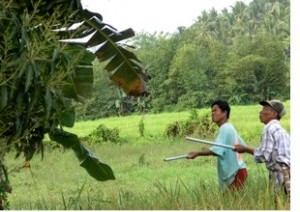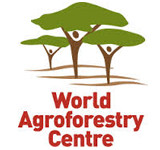
Vigyan Bhavan & Kempinski Ambience
10 - 14 February 2014
Delhi, India
blog

Programs to support tree planting on-farm are more likely to succeed in areas that are already deforested or where remaining forests are effectively protected, and where farmers have secure land tenure, say Fernando Santos Martin and colleagues in a policy brief published by the ASB Partnership for the Tropical Forest Margins and the World Agroforestry Centre. They further say that to support tree planting, governments should focus on enabling conditions, rather than providing tree seedlings.
As long as natural forests can be accessed for timber, farmers have little incentive to grow trees on their own land. National tree planting programs in the Philippines have achieved early successes with fast growing trees. However, the quality of wood was low, earning the farmers disappointingly little income. Some farmers responded by growing high-value, slower-growing native timbers, intercropping trees with maize. What are the prospects for this? What influences smallholders to plant native timber trees? Which types of farmers are doing it? Is it profitable? What policy measures could support or enhance such agroforestation of the landscape? A recent study by the ASB Partnership for the Tropical Forest Margins and the World Agroforestry Centre looked at several of these questions at the island of Leyte in the Philippines. Boosting the productivity and sustainability of forestry and agroforestry, and improving policies and institutions that affect these are a key focus of the CGIAR’s Collaborative Research Project 6 on Trees, Forests and Agroforestry—of which the World Agroforestry Centre is a key partner.
Leyte province was selected as the study site because it was representative of upland environments that were intensively cultivated and heavily degraded, and in which farmers had started to plant native timber trees. The study found that agroforestation—planting trees on farms—in the Philippines has little chance of increasing tree cover while access to native forests provides timber resources. Where farmers had unrestricted access to nearby forests for timber, they saw no need to plant their own timber trees. The land controlled by the household—total area and number of parcels it was divided into—and tenure security are also key factors affecting farmers’ decisions to plant native timber trees on their farms. This means reforestation programs are more likely to be successful in areas with secure land tenure that are already deforested (or have high potential for degradation). The study also showed a positive link between access to markets and tree-planting activities.
In the Philippines, complicated government regulations and permit requirements are imposed on the harvest and use of farm-grown trees, but this did not seem to deter tree planting in the study area. Cultural and demographic aspects (such as education, age, experience with planting and managing tress, and whether farmers were migrants or long-time settlers) also made little difference to farmers’ decisions to plant trees, once farm size, closeness to forest and distance to market were accounted for.
The net loss of forests in Asia has halted. From 2000 to 2005, there was an annual net gain averaging just over 1 million hectares, to which China, India and Vietnam were major contributors. During the same period, Indonesia, Cambodia, Sri Lanka, and Myanmar all lost forest area. The Philippines is now showing signs of joining the trend towards reforestation and may be at the beginning of a national forest transition. Total forest cover in 2003 was 11% higher than the 1988 forest cover of 6.5 million hectare. Trees on farm can lead the way in a ‘forest transition’ in the Philippines.
However, for the farmer the economic benefits of growing trees are small. Profitability of on-farm tree production is negatively affected by policies that tax timber as a ‘forest product’ and subsidize food crops and fertilizers. For Philippine society as a whole, a more rapid tree transition would be economically viable if forest-based taxes and informal levies on getting farm-grown timber to the markets did not depress farm-gate prices. An interlinked review of agricultural and forest policies is needed to create conducive conditions for tree planting by farmers.





